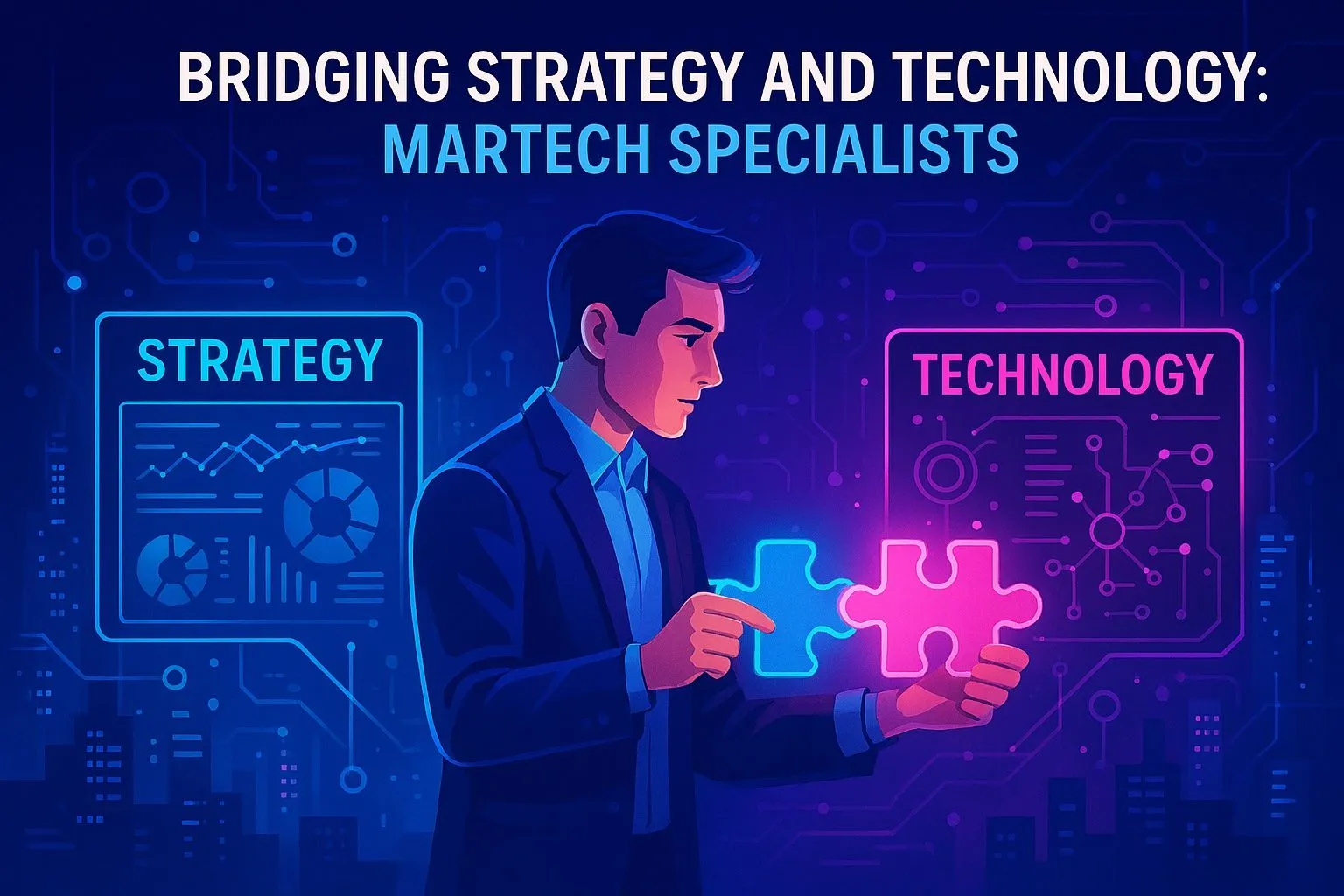The AI Task Force: A Blueprint for Cross Department AI Governance
Jul 10, 2025 | 4 min read

AI adoption is accelerating inside B2B organizations, but strategic alignment often lags behind.
As departments explore tools independently, organizations end up with fragmented pilots, inconsistent data practices, and reactive compliance efforts. These silos not only reduce ROI but also introduce operational risk and reputational exposure.
That’s why forming an AI governance team isn’t just helpful-it’s foundational.
A cross-department AI council ensures that innovation doesn’t outpace oversight. It aligns stakeholders across legal, IT, marketing, data, and operations to support responsible adoption and successful scaling. Most importantly, it fosters a shared vision and execution path for how AI supports the business.
In this guidepost, we’ll explore how to build a functional, flexible, and forward-looking AI task force. You’ll learn who to involve, how to structure governance, and how to balance speed with accountability.
Why You Need a Cross-Functional AI Council
AI adoption isn’t plug-and-play. It brings operational, ethical, and cultural transformation.
As AI begins influencing decisions, automating workflows, and surfacing insights across the business, the lack of shared oversight becomes a liability. Without a cross-functional AI governance team, your organization is likely to:
- Approve duplicative or incompatible tools
- Misclassify data usage and violate compliance
- Develop AI content workflows without quality control
- Miss opportunities to scale successful pilots
A centralized AI council avoids these pitfalls by creating standards, sharing knowledge, and managing priorities across teams. It doesn’t slow progress—it keeps progress aligned.
When structured correctly, AI governance:
- Encourages cross-team collaboration
- Clarifies roles and responsibilities
- Enables ethical and compliant decision-making
- Translates strategy into execution
Core Members of an AI Governance Team
The most effective AI governance teams draw expertise from across the organization. Each role brings unique insight and operational ownership.
Executive Sponsor
- Provides high-level accountability and direction
- Links AI to the company's broader transformation or growth agenda
- Serves as the final approver for budget and policy decisions
Legal & Compliance Lead
- Reviews data consent, regulatory requirements, and intellectual property risks
- Defines guardrails for AI usage, particularly with generative content
- Guides contract reviews for AI vendors
IT Lead
- Ensures tools align with infrastructure, security, and performance standards
- Develops long-term IT AI adoption roadmaps
- Bridges integrations with data systems and APIs
Marketing & Business Unit Leaders
- Bring use cases and customer insights from their departments
- Shape pilot goals, feedback loops, and operational readiness
- Help standardize internal communications and change management
Data Governance & Analytics Lead
- Maintains consistency in data classification, accessibility, and quality
- Aligns AI projects with enterprise data policies
- Ensures accuracy of data inputs powering decision-making models
AI/ML Specialist or Technical Advisor
- Evaluates feasibility of use cases
- Helps score and prioritize vendors or build-versus-buy scenarios
- Monitors model performance, drift, and bias risks
Change Management Lead
- Ensures policies are understood and adopted
- Oversees training, onboarding, and internal messaging
This group doesn’t need to meet daily, but they do need shared goals, clear decision rights, and real-time communication channels.
How to Structure AI Governance Without Slowing Down
Governance doesn’t mean bureaucracy. Done well, it enables fast, thoughtful decision-making and scalable growth.
1. Create an AI Use Case Evaluation Framework
Establish a transparent intake and scoring process using criteria like:
- Strategic value
- Data availability and quality
- Technical complexity
- Privacy, risk, or compliance sensitivity
- Resource needs and cost
This helps the council prioritize high-impact projects without creating bottlenecks.
2. Build Policy That Evolves With Maturity
Start with lightweight, practical policies addressing:
- Approved data sources and access protocols
- Approved tools and risk categories
- Content review processes for generative AI
- Disclosure guidelines for external use
Review and refine policies quarterly as your capabilities mature.
3. Maintain a Central Registry of Pilots and Tools
Track all pilots, vendors, outcomes, and owners in one central location. Transparency reduces duplication and speeds cross-team collaboration.
4. Capture and Scale Institutional Knowledge
Document prompts, workflows, performance benchmarks, and business outcomes. Turn pilot insights into scalable onboarding and training resources.
The Role of IT in AI Governance
AI often enters the business through SaaS platforms, but its implications span the tech stack.
A strong IT partnership ensures:
- Vendors are vetted for security, scalability, and uptime
- APIs, data flows, and integrations are reliable and compliant
- Usage is monitored for anomalies and inefficiencies
- Tools align with long-term infrastructure plans
Embedding IT into AI governance enables scale while minimizing risk.
From Pilot to Scale: Building AI Maturity Over Time
The AI council should evolve from reactive oversight to proactive leadership.
Scaling AI maturity involves:
- Moving from disconnected pilots to a formal roadmap
- Launching templates for intake, risk scoring, and approvals
- Training managers on AI literacy and governance principles
- Tracking KPIs tied to revenue, efficiency, and experience outcomes
- Creating an internal knowledge hub and regular reporting cadence
This shift ensures AI adoption grows in alignment with company goals.
Conclusion: Align to Scale, Govern to Win
AI is transforming how organizations operate. But without governance, even the best tools can create confusion, redundancy, or compliance risk.
A well-structured AI governance team bridges vision and execution. It empowers innovation while protecting people, processes, and brand integrity.
Whether you’re just starting or rapidly scaling, now is the time to build a task force that provides clarity, consistency, and confidence.
Need help building your AI council?
Connect with the CI Digital team at Ciberspring.
We'll help you align stakeholders, define policy, and implement a scalable, business-aligned governance model.
FAQ
What is the goal of an AI governance team?
To ensure AI tools are used ethically, securely, and strategically across the organization while supporting scalable growth.
Who should own the governance process?
Ownership should be cross-functional, with executive sponsorship and department-level accountability.
Do small or mid-sized companies need AI governance?
Yes. Even basic frameworks reduce risk, improve transparency, and increase success rates for pilots and rollouts.
How is AI governance different from data governance?
Data governance manages the information itself. AI governance manages how that data is used to make decisions, generate content, and automate workflows.



 Gradial
Gradial  PEGA
PEGA 




